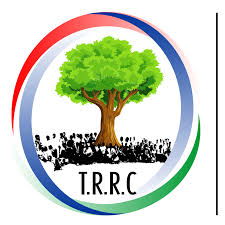Missing persons and the process of human identification

One of the objectives of the Truth, Reconciliation and Repatriations Commission (TRRC), mandated by Part III Section13 (b) of the TRRC Act 2017, is to “establish and make known the fate or whereabouts of disappeared victims”. Consequently, identification of the victims is essential.
Given the passage of time since the occurrence of events being investigated by the TRRC, identification of victims will be a challenging process.
The TRRC is therefore working with forensic experts to help with the identification process but also needs assistance from the families of the missing persons.
Part of the process of identification involves obtaininga detailed description about the missing person at the time of their disappearance. Consequently, over the tenure of the TRRC, families with missing relatives will be invited to provide important information.
Families will be asked to provide details about their missing relative such as the age of the person at the time they disappeared, details of their physical appearance (such as the person’s height, their physical health – for example, did the person have sore joints, or ever go to the doctor for a broken bone; did the person have stained teeth, or suffer from a tooth ache or a broken tooth), or any other information regarding distinguishing features.
Other information that may be useful for the TRRC are details about what the missing person was wearing at the time they disappeared (including details such as jewelry, watches, glasses, etc.)
Another way to try and identify a late relative is through DNA analysis.DNA caries genetic information that characterizes each of us as individuals. For this reason, a comparison of DNA from a family member with the late relative may be useful to establish an identity.
Therefore, with consent, after the interview with the TRRC,family members will be asked to provide a DNA sample. This process involves a simple swab of the inside of the mouth so some saliva can be collected and subsequently analyzed.
The TRRC understands that providing details about a missing loved one can be very emotional, and for many families this will be the first time in over 25 years that efforts have been made to help identify a missing family member. For this reason, the TRRC offers ongoing psychosocial support for families coming to provide information.
The first cases that the TRRC are working on relate to the events of November 11, 1994 at the Yundum and Fajara Military Barracks. Families with missing relatives related to this event are encouraged to make contact with the TRRC.
Families with missing relatives for other cases should also contact the TRRC. The TRRC wishes to stress that while they are undertaking all efforts to attempt to locate and identify missing persons in The Gambia, no absolute guarantee for identification can be made.
Essa Jallow
Communications Specialist, TRRC


Comments are closed.